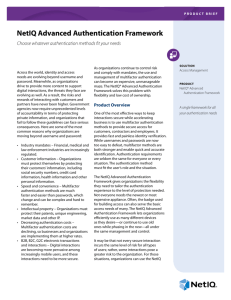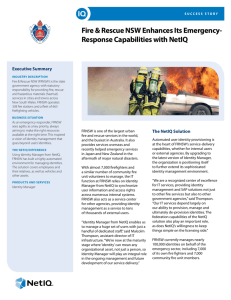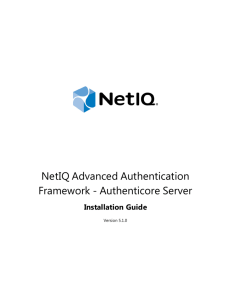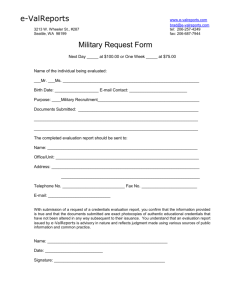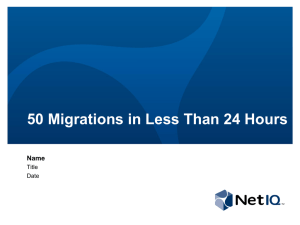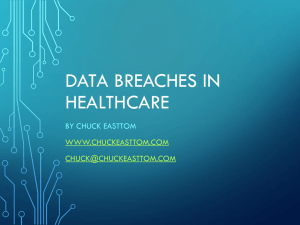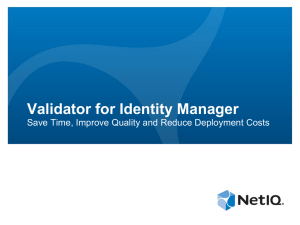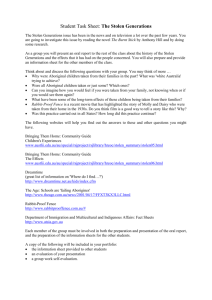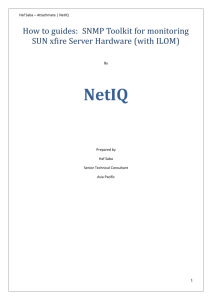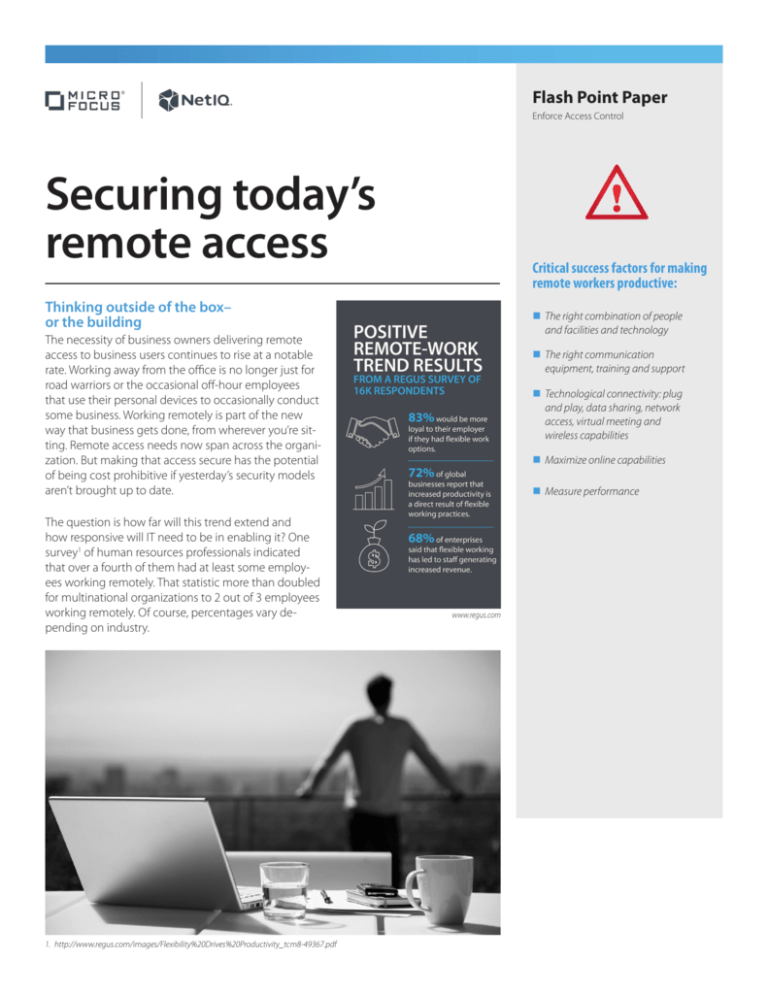
Flash Point Paper
Enforce Access Control
Securing today’s
remote access
Critical success factors for making
remote workers productive:
Thinking outside of the box–
or the building
The right combination of people
and facilities and technology
The necessity of business owners delivering remote
access to business users continues to rise at a notable
rate. Working away from the office is no longer just for
road warriors or the occasional off-hour employees
that use their personal devices to occasionally conduct
some business. Working remotely is part of the new
way that business gets done, from wherever you’re sitting. Remote access needs now span across the organization. But making that access secure has the potential
of being cost prohibitive if yesterday’s security models
aren’t brought up to date.
The question is how far will this trend extend and
how responsive will IT need to be in enabling it? One
survey1 of human resources professionals indicated
that over a fourth of them had at least some employees working remotely. That statistic more than doubled
for multinational organizations to 2 out of 3 employees
working remotely. Of course, percentages vary depending on industry.
.
1. http://www.regus.com/images/Flexibility%20Drives%20Productivity_tcm8-49367.pdf
The right communication
equipment, training and support
Technological connectivity: plug
and play, data sharing, network
access, virtual meeting and
wireless capabilities
Maximize online capabilities
Measure performance
www.regus.com
Flash Point Paper
Enforce Access Control
The average cost of data breach is $217 in the U.S.
7 out of 10
Health
Education
security attacks
target small
businesses
Pharmaceuticals
Financial
Communications
Retail
Industrial
Services
Consumer
Energy
Hospitality
Technology
Media
Source: Global Security Report by Trustwave
Research
Transportation
Public sector
3 out of 4
Source: 2015 Ponemon Breach Study
breaches are
through stolen
credentials
The risks of working outside
the box
It seems that every week a headline points
out that another organization has disclosed
(or admitted to) a large data breach. The
corporate-named victim in the headlines is
often a broadly recognized one and clearly
spans across all industries.
For a decade, the Ponemon Institute has
conducted annual surveys tracking the cost
of these cyber-attacks, which continues to
rise. The total costs of a breach have gone
up 23 percent in the last two years. And
worldwide the average cost of a stolen
record is now at $154, a notable portion
of which is due to loss of customers (and
in many cases, patients). That’s real money—money that was coming in the door. In
terms of planning actionable remedies, it’s
important to note that stolen credentials
enable 8 out of 10 data breaches. So when
an organization examines how they’re
going to update their access control to
enable and empower their remote and
mobile workforce, the risks posed by stolen
credentials can’t be ignored.
And in case small business managers think
they’re immune from this type of risk, last
year 1 out of 3 breaches were with small
to medium businesses (SMBs). The reality
is that while criminals understand that
the payoff from stealing information from
SMBs is significantly smaller than a large
enterprise, the barrier to obtaining valuable
digital information is usually much lower,
often gaining unauthorized access through
social engineering. And as it has been
demonstrated again and again, the payoff
is well worth the criminal’s time.
Source:Verizon DBIR study
2
1. The Global State of Information Security® Survey 2015, by PwC, CIO and CSO: www.pwc.com/gsiss2015
2. US cybercrime: Rising risks, reduced readiness, by PwC http://www.pwc.com/en_US/us/increasing-it-effectiveness/publications/assets/2014-us-state-of-cybercrime.pdf
Reasons why corporations are growing their remote workforce:
Reduced costs in real estate and office space
Job sharing–people sharing a job, and space
Flexible schedules, based on needs rather than
regimented work times.
Source: from research and work done by Sandy Burud, PhD at flexpaths.com
1of 4
organizations in North America have at least
some of their employees work remotely
The rewards of working
outside the box
If IT and security teams decide that clamping down on remote access is the way to
go, they need to keep in mind the ultimate objective: to empower the business
teams to be as productive as possible.
So security must be intertwined in the
strategy, productivity and flexibility is what
keeps businesses and other organizations
thriving. One of the key components is to
ensure that professionals are able to access
the information and services they need regardless of where they are located or what
device they are using. So, if security is an
afterthought, sooner or later the business
will lose. But hampering business productivity isn’t the way to win either.
wwww.microfocus.com
Although virtual private networks (VPNs)
continue to be the most popular solution
for providing secure access to remote
users, other remote access technologies
are proving to be even more effective.
These technologies include virtualization
solutions that remotely deliver applications,
specialized services, or full desktop views
and require only modest network bandwidth and client processing power. They
also keep private information off remote
devices while keeping access to it convenient. As the business leverages these
remote technologies and as professionals
interact with them, the expectations continue to mount. The right answer isn’t to be
the department of “no,” but rather to be the
expert of “how.”
3
NetIQ gives you the freedom
to incorporate whatever
authentication type that works
best for your business.
www.microfocus.com
Professionals would just as
soon not be in a box
Regardless of whether you’re using a
traditional VPN for your remote access
needs or some type of virtualized
technology, it’s critical to protect that
access. And since 8 out of 10 breaches
involve stolen credentials, verifying
the user’s identity is fundamental to
security.
One of the most effective approaches
to verifying someone’s identity is to
invoke two-factor authentication. In
other words, to invoke another type of
authentication once someone enters
their credentials, which could be stolen.
It requires users to provide something
they have, such as a code from a device, or something they are: their finger,
face, voice, and so on. When done
properly, providing a step-up in the authentication process has proven most
effective in keeping outsiders out.
too much for license fees and administration overhead. And as you continue
to expand who gets secure remote
access, sooner or later it’s going to be
clear that the old way of authenticating VPN users doesn’t scale: neither
financially nor in the hours required for
administration. NetIQ has a lot to offer
in both areas.
If you currently allow VPN or other
types of remote access technology
to access sensitive information with
nothing more than user credentials,
you’re playing with fire. And if you have
noticed the headlines of late, sooner or
later you’re going to pay for your security shortcut. But NetIQ can help. With its
open architecture and straightforward
user licensing, the NetIQ Advanced
Authentication Framework is the way
to get started.
To learn more about Advanced
Authentication Framework visit
http://www.netiq.com/2FA.
If you’re part of an organization that
still relies on hard tokens for two-factor
authentication, you’re probably paying
584-000020-001 I 10/15 I © 2015 Micro Focus. All rights reserved. NetIQ and the NetIQ logo are registered trademarks of NetIQ Corporation in the USA. All other company and product names may be trademarks of their respective
companies. PO 10/2015
Micro Focus | NetIQ
Houston, TX, United States
515 Post Oak Boulevard, Suite 1200
Houston, TX 77027 USA
Toll Free: 888-323-6768
Tel: 713-548-1700
Fax: 713-548-1771
info@netiq.com

